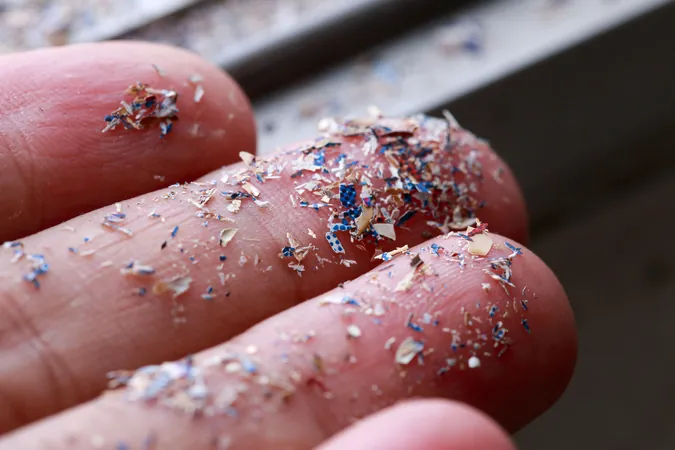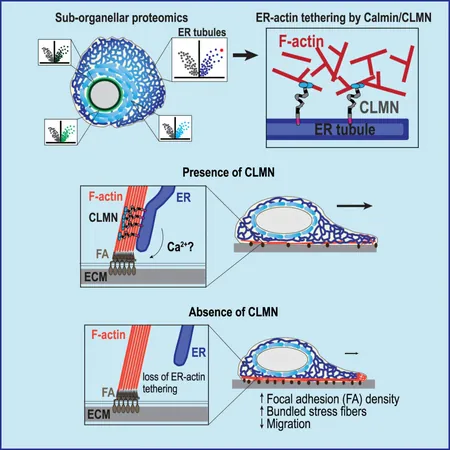
Microplastics: The Unseen Threat to Our Health Revealed in Shocking New Research
2025-04-11
Author: Wei Ling
Microplastics Uncovered: A Hidden Health Hazard
Recent medical conferences have highlighted alarming insights about microplastics and their potential effects on human health. Experts gathered at the prestigious 2025 American College of Cardiology (ACC) Annual Scientific Session and the American Academy of Dermatology (AAD) Annual Meeting to delve into this pressing issue.
What Are Microplastics?
Microplastics are tiny plastic fragments less than 5 mm in size, originating from industrial processes and common consumer products like cosmetics and cleansers. These pollutants are not only found in the environment but are also integrated into our daily lives, raising concerns about their long-term impact.
How We Encounter Microplastics
Humans are exposed to microplastics primarily through ingestion, inhalation, and skin contact. Studies reveal that an average person may ingest between 39,000 and 52,000 microplastic particles each year from various sources, including drinking water and seafood. Inhalation adds another layer, with the average yearly exposure reaching up to 121,000 particles.
The Alarming Findings
Research presented at the ACC demonstrated a connection between higher microplastic concentrations in certain communities and increased rates of chronic diseases such as diabetes and hypertension. A significant study analyzed 555 U.S. census tracts near water bodies, revealing a troubling correlation between microplastic pollution and serious health issues.
Microplastics in Our Bodies
Microplastics have been found in various human biological samples, including the liver, lungs, and even breast milk. Alarmingly, they can cause oxidative stress and DNA damage at the cellular level, suggesting a direct threat to our health.
Experts Call for Urgent Action
Amid these shocking revelations, health experts emphasize the urgency of further research to fully understand the scope of microplastics' impact. They recommend reducing exposure by minimizing plastic production and improving waste management.
Dermatologists Weigh In
Discussions at the AAD Annual Meeting also explored the implications of microplastics on skin health. Dermatologists like Dr. Dennis Niebel highlighted the importance of avoiding microplastics in personal care products and promoting sustainable practices to protect our health.
The Path Forward
As our understanding of microplastics and their health risks evolves, experts urge individuals and healthcare professionals alike to take proactive steps. Reducing plastic use and advocating for safer alternatives could be key to safeguarding our health and the environment.
As Sai Rahul Ponnana of Case Western Reserve School of Medicine aptly put it, "Taking care of our environment means taking care of ourselves." Stay informed, stay proactive, and join the fight against the hidden dangers of microplastics.




 Brasil (PT)
Brasil (PT)
 Canada (EN)
Canada (EN)
 Chile (ES)
Chile (ES)
 Česko (CS)
Česko (CS)
 대한민국 (KO)
대한민국 (KO)
 España (ES)
España (ES)
 France (FR)
France (FR)
 Hong Kong (EN)
Hong Kong (EN)
 Italia (IT)
Italia (IT)
 日本 (JA)
日本 (JA)
 Magyarország (HU)
Magyarország (HU)
 Norge (NO)
Norge (NO)
 Polska (PL)
Polska (PL)
 Schweiz (DE)
Schweiz (DE)
 Singapore (EN)
Singapore (EN)
 Sverige (SV)
Sverige (SV)
 Suomi (FI)
Suomi (FI)
 Türkiye (TR)
Türkiye (TR)
 الإمارات العربية المتحدة (AR)
الإمارات العربية المتحدة (AR)